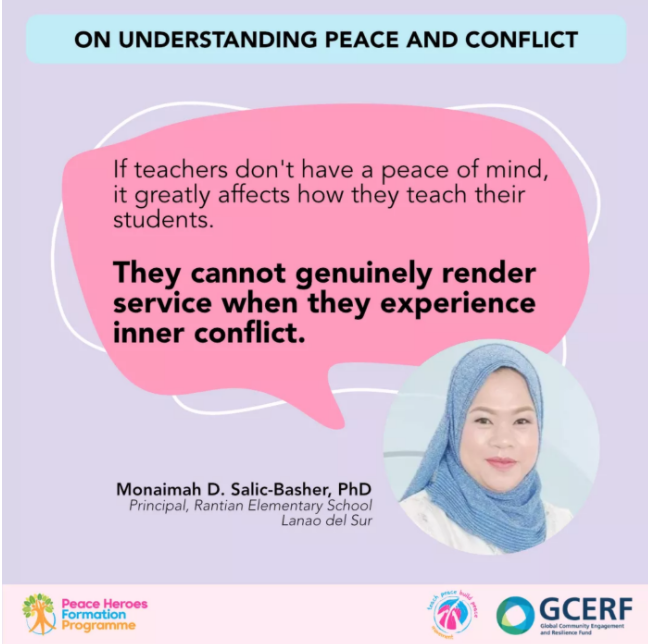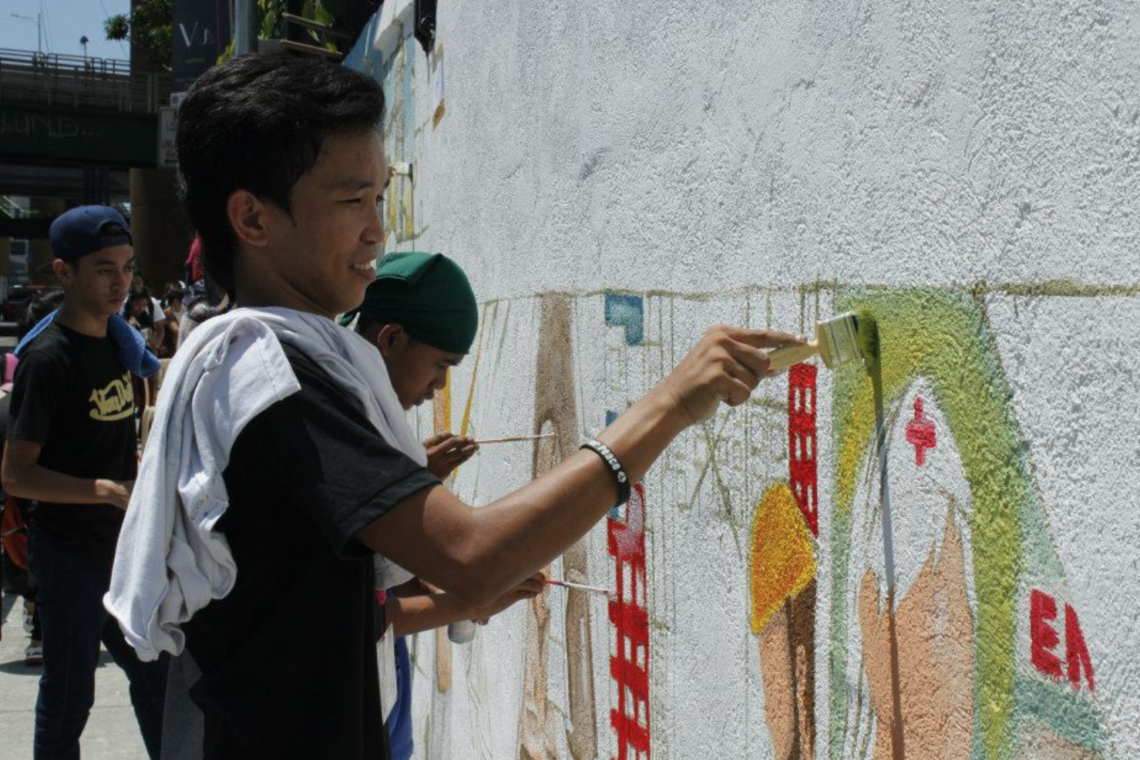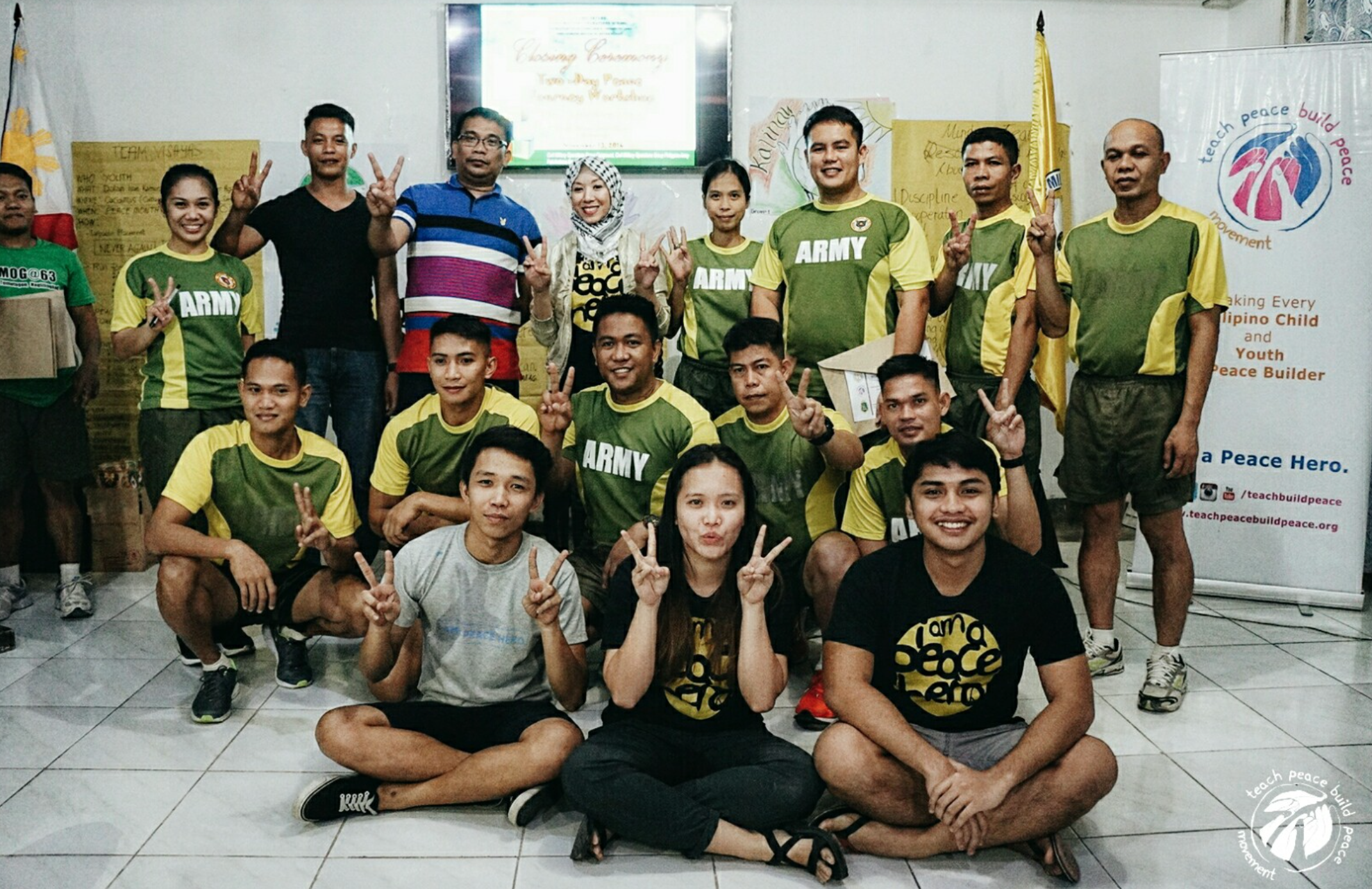In March 2021, the Teach Peace Build Peace Movement (TPBPM) through the Peace Heroes Formation Programme conducted interviews with teachers from different schools to gain a better understanding of the schools and communities’ peace and conflict situation in Lanao del Sur. Before the onset of the Programme, TPBPM wants to impart the stories of our Peace Educators as we begin this journey of Peace Education.
Though outside of Marawi City, Ditsaan-Ramain was one of the 20 municipalities affected by the Marawi Siege in 2017. Residents of different barangays (communities) heard the loud explosions that shocked their homes. Azcayah Sacar, 37, the Officer-in-Charge (OIC) Principal of Barimbingan Central Elementary School (CES), recalls, “During the Marawi Siege, we experienced violence. Education stopped. We were not able to protect education, even our homes. We did not know where to go. There was no stability. Everything was affected, our mental, emotional, and physical health.” Conflict and violence affected Azcayah, her family, community, and her students at Barimbingan CES.
When there is no peace, different individuals experience the devastating effects of war. Alaina Ampuan, 35, a teacher from Barimbingan CES, described what they went through. She shared, “During the siege, we evacuated. When bombs were crashing to the ground near us, we felt it. We couldn’t bring anything. The explosion was only five minutes away from the school.” The conflict greatly sowed fear among the school and community members. It affected the focus of students and teachers, especially the service they render for the school community.
Alyannah Mamailao Macmod, 35, Division Office Staff at Buayaan Elementary School, added “When there is gunfire, our children cannot go to school, even the economy and lives of people in the community are affected. People feel fear, they do not have peace of mind when there is violence.”
In the current modular learning setup, they faced inner conflicts and challenges relating to the increased workloads and stress, and difficulties in contextualizing the modules, printing, releasing and distributing it to parents and students, as well as evaluating students’ performances in the new normal.
In TPBPM’s consultation with teachers in conflict-affected schools in Ditsaan-Ramain, all of them conveyed that there is a lack of training on Peace Education for teachers. They also have not participated in training on cultivating inner peace, conflict transformation, and relationship-building which are essential in coping up with today’s challenges in teaching in the new normal, and in building the resilience of communities highly vulnerable to conflict and violence. Peace Education proved to be even more relevant when interviewed teachers recalled their experiences of teaching during a pandemic. The presentation of the programme and consultation led them to the realization that there is strong hope in the possibility of cultivating change in schools and communities through Peace.
“Peace Education is important because we can achieve what we want with peace; we are in the right direction. We can also aim for quality education because we also have peace in our pupils, teachers, and community,” Monaimah Salic, 35, Principal of Rantian Elementary School shared during the consultation.
For the teachers in Lanao del Sur, Peace Education is important for children to have quality education, nurturing relationships and the resiliency to achieve their goals. A common sentiment they shared is that when there is no peace, teachers experience inner conflict, including the parents and their children. They deeply emphasized that we can only have good quality education for children if we have peace within ourselves and towards others.
Through these consultations and conversations, it has cultivated a sense of hope for schools and communities amidst trying times. While the PHFP with partner schools in Ditsaan-Ramain, Lanao del Sur is at its onset, the teachers and school leadership have already captured the need to teach Peace to schools and communities and the relevance of living Peace as a Way of Life.



 In an interview with Louise, he described what he felt during his first peace mission: “There was a lot of fumbling and uncertainty at first but, I have grown to love [kids] because teaching them has been an ecstatic experience. We would go to different places to teach and the kids were really excited for us to return.”
In an interview with Louise, he described what he felt during his first peace mission: “There was a lot of fumbling and uncertainty at first but, I have grown to love [kids] because teaching them has been an ecstatic experience. We would go to different places to teach and the kids were really excited for us to return.”

